Buy or gift a stand-alone digital subscription and get unlimited access to dozens of back issues for just £18.99 / $18.99 a year.
Please register at www.exacteditions.com/digital/cornucopia with your subscriber account number or contact subscriptions@cornucopia.net
Buy a digital subscription Go to the Digital EditionNo wonder Aphrodisias was the Emperor Augustus’s favourite city in Asia. Famed for its exquisite sculpture and unsullied surroundings, for Patricia Daunt it is the most beautiful site in the classical world
Aphrodisias is, they claim, the most beautiful of all the archaeological sites in western Turkey – arguably of the whole classical world.Lying some 230 kilometres east of Izmir in a valley watered by a tributary of the Upper Menderes (or Maeander, ancient Maiandros), it is still relatively remote, though widening of roads, quarrying for marble and construction of new dams are changing the surrounding country. Spectacular Graeco-Roman monuments adorn the city centre, some that have survived two millennia, others unearthed since excavations were begun in 1961, and yet others reassembled from the debris left by earthquakes. Nearly 60 years of continuous excavation is revealing the full extent of the grandeur of an inland city in the Eastern Roman Empire with a surprisingly long post-classical life which lingered into Ottoman times.
Excavation beneath the Acropolis mound during the 1960s unearthed settlements stretching back into the mists of time: Bronze Age, Chalcolithic, Neolithic. Ninoe, as the place was then known, was steeped in the tangled legends of western Asia Minor. As seat of the Carian deities and their sanctuary, from early time it attracted devotees of the fertility goddess. Sometime during the fourth or third century BC Ninoe was renamed Aphrodisias, or ‘the city of Aphrodite’, and the old sanctuary given some kind of temple, the vestiges of which still lie beneath the temple we see today.
The relative prosperity of the settlement and its temple was rudely interrupted during the dark days of the early first century BC when the cities of Asia Minor were caught between Roman occupier and Pontic invader from the Black Sea. Only when the sea battle of Actium in 31BC finally saw the end of the Roman Republic did Aphrodisias’s loyalty to Rome bear fruit with Roman patronage and a surge of pilgrims to her temple.Under the stability of the Roman Empire, Aphrodisias enjoyed an explosion of urban expansion. It owed much, as did the school of sculpture for which the city was to become famous throughout the Roman world, to the extensive quarries of much-prized marbles in the foothills of Babadağı (ancient Cadmus) two kilometres from the city centre. Sumptuous buildings – the late-first-century-AD Basilica was so massive that it took up three city blocks – were ornately decorated with depictions in marble of deities, emperors and local notables, as well as domestic and wild animals: the late Hellenistic city was transformed.
Seventeenth- and eighteenth-century travellers were the first to be interested by the wealth of Greek and Latin inscriptions and intrigued by the graffiti which abounded on the site. Sir Charles Fellows, setting out from Izmir in early March 1840 to record the “beautiful city built wholly of white marble” for the London Dilettante Society, found incoming Turkomans had recently taken over the abandoned settlement that lay within walls that had encircled the Graeco-Roman city. Red-roofed lath-and-plaster houses, men, women, children, dogs, sheep and goats now huddled among the ruins. The fertility of the soil and the abundance of water had attracted them to settle; the village had been renamed Geyre (a modulation of ancient Caria). Of Aphrodisias’s former glory the new inhabitants knew nothing.
In 1904 the Ottoman statesman and head of antiquities Osman Hamdi Bey put a stop to excavations in the Hadrianic Baths – by the French railway engineer Paul Gaudin – and the outbreak of the Second World War interrupted excavation by an Italian archaeological team. The work of unearthing, recording, conserving and restoring the marvels now evident on the site and displayed in a purpose-built museum had to wait until 1961, when the project was put in the hands of New York University (NYU). Over the following 56 years just two scholars have directed the project to achieve this.Aphrodisias is unusual in owing much of its Roman splendour to a single benefactor, one Gaius Julius Zoilos. Inscriptions confirm that, echoing the city’s political aspirations and devotion to the emperors, the initial building spree was financed by this remarkable Aphrodisian, who had been enslaved, possibly by Julius Caesar himself. Inherited and freed by Octavian (later Caesar Augustus), he made a triumphant return to Aphrodisias around 38BC. The former slave in the Roman imperial service was now a city oligarch.
Appointed high priest of Aphrodite, Zoilos secured the boundaries of the 50 CORNUCOPIAThe heavily carved second-century Tetrapylon at the entrance to the sanctuary of Aphrodite – the Aphrodisians loved grand gateways goddess’s sanctuary, endowed the cult and paid for a new marble temple. He was also responsible for a new stage building for the Theatre, a grand marble portico for the North Agora and much else besides. The oligarch’s munificence was commemorated by a series of sculpted panels that adorned his tomb. In 1958 a magazine article on Turkey showed a photograph of Geyre villagers banking an irrigation channel with these useful panels. Prof Kenan Erim, a Turkish archaeologist at NYU excavating that summer in Italy, said that that photograph first whetted his appetite for pioneering work at Aphrodisias. The Zoilos Frieze is now displayed in the museum’s main passageway, probably no more than a stone’s throw from where it was unearthed.
During the 1960s the first-century Theatre was cleared of the spoil that completely filled it, and the village houses perched on the eastern slope of the Acropolis were removed. The Hellenistic-style Theatre was found to have been considerably modified when gladiatorial fights and contests with wild beasts became fashionable under Rome. Excavation brought to light Zoilos’s elaborate three-storey stage building, together with a big cache of statues now in the museum. The jewel in the crown was a pair of boxers, complete, life-size statues of athletic victors of the third century AD. Mature and muscular in their nudity, they are bare-knuckled, with leather thongs wrapped around the full length of their arms.
On the east wall of the Zoilos stage building, the Aphrodisians later proudly inscribed an astonishing collection of documents bearing witness to their city’s special relationship with Rome. These imperial letters record the grants of autonomy, immunity from taxation, and asylum rights for the shrine of Aphrodite. The inscription begins with a majestic testimonial, incised in exquisite Greek lettering, from the Emperor Augustus when he was Octavian the Triumvir, naming Aphrodisias the one city in all Asia he had selected as his own. The texts on this “Archival Wall” suffered slight later adjustment: when the Aphrodisians converted to Christianity during the fifth century AD, the pious denizens renamed their city Stavropolis (City of the Cross) and had most visible mentions of the pagan goddess Aphrodite chiselled out.
Repair and reopening to public access of the finest, grandest and largest of the city’s pair of bathhouses, the Hadrianic Baths, was completed in 2016. A surprise find during that season was a bronze coin of the early seventh century beneath restored paving in the central caldarium, or hot room, suggesting that the Christian citizens of mid-Byzantine Aphrodisias were still affluent enough to afford expensive repairs to keep both aqueduct and furnaces functioning in the old Roman bathhouse. It is a building of a light freshwater limestone, once splendid with marble revetment on the walls and striking for its complicated underground service corridors, complete with furnaces and water channels. The decoration of the forecourt of the palaestra(wrestling school), with its large piers carved with figures of Eros hunting animals intertwined in scrolls of acanthus leaves, is unmistakably Aphrodisian.
When Aphrodite’s Temple is surrounded by carpets of spring anemones, though greatly changed since Zoilos’s day, it is much as Fellows saw it in 1840. It had been in due course converted into a church, with a massively engineered reordering of its structure to provide roof, apse, nave, aisles and narthex. When you sit on one of the fallen marble pillars, the outlines of the temple as well as the church are still evident.Before entering by the West Gate, Fellows noted a “mile of ornately sculpted marble sarcophagi lining either side of the road”. Some of these now line the pathways and ring the museum, introducing us to generations of Aphrodisian families seen through the eyes of gifted and original artists whose style of sculpture has been termed “mannerist”, even “baroque”.
The spectacular first-century Stadium to the north of the West Gate is the finest complete example of its kind to survive from antiquity. In the AD350s city walls were hastily built against its northern line. Two curved ends and sides bowed out to form an ellipse ensure all spectators an unobstructed view of the entire field. It measures an astonishing 270 metres in length. Whilst the city had a population of some 8,000, the 30 tiers of seating are capable of accommodating 30,000 – though a notable adaptation in the east end was evidently made to accommodate gladiatorial fights and contests with wild animals following the city’s decline. No ancient building at Aphrodisias escapes a share of telltale graffiti. In the Stadium, not only graffiti but cuttings for awnings, masons’ marks and inscriptions for reserved seats, which include women’s names, survive: a book on its own.
The Aphrodisians were notably keen on ostentatious gateways, particularly when embellishing their city’s main thoroughfare running north-south through the city centre: the Tetrapylon Street. The monumental Tetrapylon is the most northerly monument revealed so far – a gateway leading westward into the holy precinct of the Temple of Aphrodite. It is of astonishing grandeur. Some could say it is overly grand. Whatever is said, this remarkable gateway with its four rows of four columns of mixed marbles simply defines religious and public space.
Further south, the Propylon, at the entrance into the Sebasteion, a temple complex dedicated to the emperors and Aphrodite, lacks the elaborate decoration and the grey marble barley-sugar columns of the Tetrapylon; for all that, it boasted life-size statues of Roman nobility. Rebuilding of the Propylon’s main structure was completed in 2016, less eye-catching but no less interesting than the 1990 reassembly (anastylosis) of the Tetrapylon itself.The Sebasteion was the latest in architectural fashion in the first century – an almost modernist, exhibitionist temple complex – dedicated to both Aphrodite and the Julio-Claudian emperors. It was paid for by two families and only discovered in 1979 beneath a line of cottages in Geyre. In the last decade, enough of it has been rebuilt, incorporating casts of sculpted panels of gods and emperors, to give an understanding of the lost temple and the precinct’s ancient splendour as well as the Aphrodisians’ dedication to the emperors – more so than to Aphrodite herself.
It is hoped that anastylosis of the 54 CORNUCOPIAimposing Agora Gate that leads from the Tetrapylon Street into the vast pleasure garden known as the South Agora may follow. A verse inscription naming this complex “The Place of Palms”, found on a piece of fallen masonry belonging to the Agora Gate, gives its correct name. Excavation over the past five years has uncovered a grand urban park of a kind known to have been fashionable in imperial Rome; it is western Turkey’s most unusual ancient complex. Its construction saw a massive engineering project paid for by local grandees, and involved cutting back the theatre hill and supporting it with a massive 20-metre-tall retaining wall to create enough flat space for a complex measuring 230 by 60 metres with some 500 metres of colonnaded porticoes around it. The bizarre sixth-century repairs to some of the columns’ Ionic capitals might, however, have made an imperial architect blush. These long porticoes enabled Aphrodisians to stroll down avenues of palms – deep trenches revealed plantings for Cretan date palms (Phoenix theophrasti). The huge, waist-deep, artificially raised pool (175 metres long, 25 metres wide) had semicircular ends with fountains and double seating that allowed viewing either way.
Graffiti abound in Aphrodisias. The Place of Palms is no exception. In 2016, along with an unexpectedly intense find of post-antique medieval coins, broken marbles and one beautiful fragment of a Julio-Claudian male portrait, the most outstanding find was a sixth-century graffito on the pool edge commemorating one “Kolotron, chief of the gold workers”, accompanied by engraved busts of champion athletes, one wearing an elaborate victor’s crown and the other – a much larger bust – of a thick-necked boxer or wrestler with a single lock of hair emerging from his otherwise clean-shaven head, hairstyle of the professional late-Roman heavy athlete. The graffitist himself is well known from other inscriptions in both Theatre and Stadium.
The first surprise during the 2016 excavation of the Tetrapylon Street came south of the Sebasteion’s Propylon: a possibly mid-Byzantine bathhouse built partly across the street, unusual in itself and evidence of the city’s adaptation in the face of contemporary stress. The second surprise was a large, veiled female portrait head, clearly of the early imperial period, discovered amongst fallen rubble north of the Propylon. It has an ideal Augustan physiognomy, with the tight “melon” hairstyle of a beautiful young woman. Careful mounting of the head on a surviving statue found earlier nearby showed that the two belonged together. The statue was identified from the inscription on its base as “Aemilia Lepida, daughter of Marcus Lepidus”. Aemilia’s statue once belonged to the famous statue display on the Propylon, which honoured more than 15 princes and princesses of the extended Julio-Claudian family, all the way back to Aineias and Aphrodite. The Aphrodisians were of course not at all concerned about the scandalous hot gossip surrounding Aemilia’s unhappy fate, and preserved the statue that honoured her on the Propylon until the seventh century.
Well born, the daughter of an aristocrat of long lineage – the powerful Tiberian senator Marcus Lepidus – Aemilia was married in AD23 to Drusus Caesar, who, with his brother, was designated imperial successor to the suspicious Tiberius Caesar. Seven years later both brothers were arrested on charges of treason, imprisoned and subsequently disposed of. Like her husband – whom, according to Tacitus, “she had pursued with ceaseless accusations” – Aemilia also met her end in the high drama of Palatine politics. She remained unpunished, infamous as she was, for as long as her father lived but subsequently fell victim to the informers for “adultery with a slave”. Tacitus adds, “there was no question about her guilt, so without an attempt at defence she put an end to her life”.
Each season’s work by the archaeologists at Aphrodisias produces surprises and new treasures. Aemilia’s beauty personifies all the emotions that Aphrodisias evokes in those bewitched by this ancient city. Striking male beauty had been unearthed in 2005: a miraculously well-preserved late-Antonine portrait head, this time of a young man of the local elite. It was found on the floor of an important chamber at the south end of the Basilica. Such spectacular discoveries are but a part of the complex project pursued under the direction of Professor Bert Smith, of Oxford and New York Universities, who succeeded Kenan Erim as director in 1991.
Aphrodisias remains remarkably untouched by the intrusions of the 21st century. The heady spoils of over half a century of excavations are safely housed in the museum and its garden – ornately carved sarcophagi, the finest statuary by generations of local craftsmen, trial pieces from the sculpture workshop; and a whole new gallery has been added to display the 70 and more sculpted reliefs, in their original sequence, from the Sebasteion’s north and south buildings. The teams of local villagers who have worked for decades with the architects and conservators are now highly skilled artisans – the new generation of Aphrodisians are conserving the artworks of their forebears.
Aphrodisias is smaller than Ephesus, less showy than Pergamum, less ancient than Sardis, yet it yields to none for addictive charm, a charm that is all to do with its atmosphere: millennial sanctity coupled with the splendour of ancient architecture and the finest marble statuary, in a site excavated with subtle expertise. The site is still studded with vines, pomegranates, figs and mature stands of poplar. When the sun goes down and the moisture rises, red squirrels still chase each other’s tails about the great plane tree with its roots entwined amongst the ruins of the Sebasteion’s lost temple. Octavian the Triumvir, the future Emperor Augustus, rightly declared that, of all the cities in Asia, Aphrodisias was the one to be preferred.
An exciting new spirit of creativity is flourishing in Yeldeğirmeni – once a place of windmills and construction workers. But will this vibrant neighbourhood of Kadiköy be able to maintain its delicate balance of old and new? Katie Nadworny reports. Photographs by Monica Fritz
Today a ghost town in the middle of nowhere, a thousand years ago Ani was a bustling commercial city where East and West converged. By Robert Ousterhout. Photographs by Brian McKee
In a chilly spring the apricot trees of Cappadocia were frothing with white blossom. By early summer the boughs would be heavy with fruit, to be eaten fresh from the branch, dried in the sun – or made into conserves like bottled sunshine for the cold winter months.
After a road trip like no other, taking in many of the best of Turkey’s burgeoning wineries, Kevin Gould and the Cornucopia tasting panel raise a glass (or several) and recommend the best of an impressive bunch
Peter Alford Andrews and his late wife, Mügül, set out to catalogue the traditional yurt – the ultimate portable dwelling. It became their life’s work.
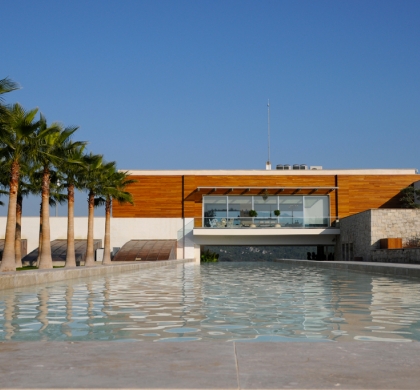
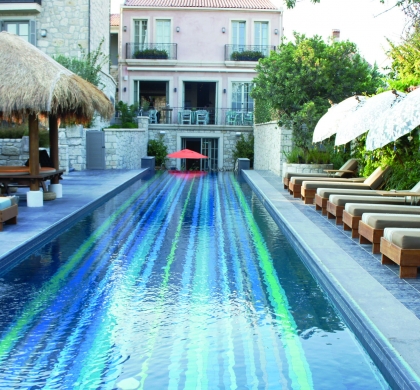
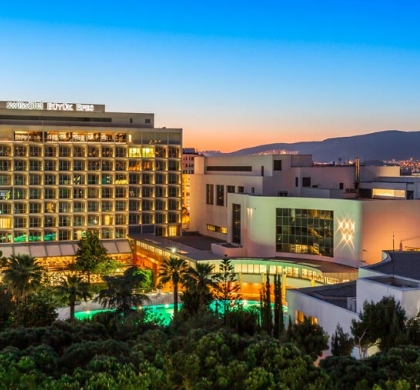
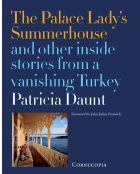
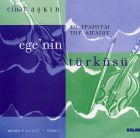
Cihat Aşkin, violin
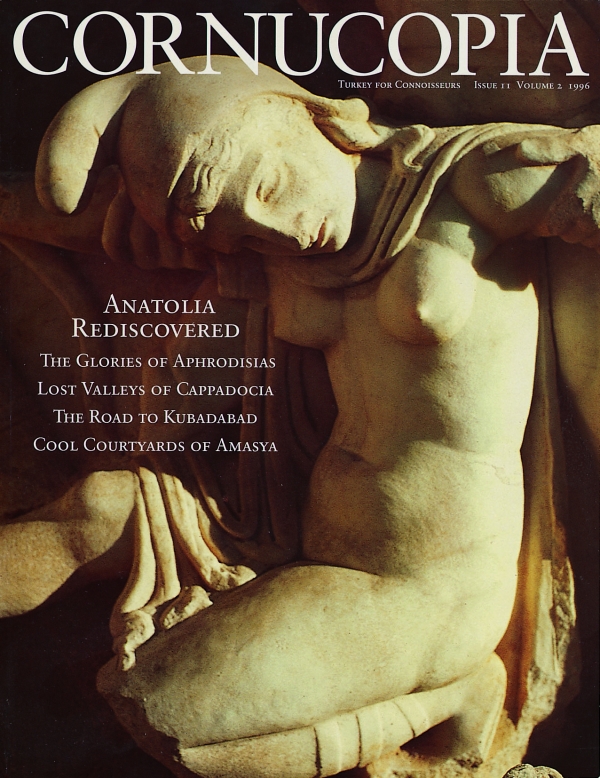

Cornucopia works in partnership with the digital publishing platform Exact Editions to offer individual and institutional subscribers unlimited access to a searchable archive of fascinating back issues and every newly published issue. The digital edition of Cornucopia is available cross-platform on web, iOS and Android and offers a comprehensive search function, allowing the title’s cultural content to be delved into at the touch of a button.
Digital Subscription: £18.99 / $18.99 (1 year)
Subscribe now